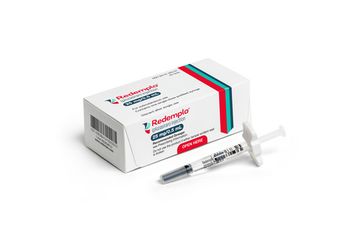
Employers: Cancer, GLP-1 Drugs and Mental Health Driving Healthcare Costs
A new Business Group on Health survey finds that nearly a quarter of all employer healthcare spending (24%) went to pharmacy expenses in 2024, and employers forecast an 11% to 12% increase in pharmacy costs heading into 2026.
Employers predict healthcare costs will increase about 9% for 2026, which could be offset to 7.6% with plan design changes, according to a new report from Business Group on Health’s
Contributing to cost increases will be more employee use of GLP-1 drugs for obesity, more patients receiving care for cancer and increased use of mental health services, the report finds.
“For many years, we’ve seen the healthcare industry grapple with rising costs, in part because of unit cost, in part because of volume of services, and in part because of the delivery system and infrastructure challenges when it comes to the employer healthcare market,” Ellen Kelsay, president and CEO of Business Group on Health, said in an interview.
The Business Group on Health surveyed 121 employers in June and July 2025 that represent about 7.4 million covered lives.
One of the biggest cost drivers is cancer care. For the fourth year in a row, the growing prevalence of cancer diagnoses and escalating costs have led to increased costs.
“There are many more people being diagnosed with cancer at younger ages,” Kelsay said. “Those diagnoses are sometimes later stage, so the cancers are more advanced and [may have] progressed. We also see a lot of treatment within the cancer field being very expensive treatment. In the cell and gene therapy space, there are a lot of wonderful innovations there, but they are also very costly.”
She said some of these cancer diagnoses are the result of people who, during the pandemic, did not get routine cancer screenings. “Some of these are cancers that we’re just catching later because of missed screening,” she said. “But I don’t think this is temporary. We are seeing a lot of peculiarities when it comes to cancer. There are later-stage diagnoses, and on one hand, you could potentially explain that as the pandemic blip that would go away over time. But at the same time, we’re also seeing more and more people getting diagnosed with cancer at earlier ages, and that’s inexplicable. Researchers are still trying to understand, for example, why there are people in their 20s and 30s who are getting diagnosed with colon cancer at astounding rates.”
More employers have enhanced their screening coverage, including covering alternatives to colonoscopies, expanding coverage of breast cancer screenings and removing age restrictions to preventive care coverage.
Increasing Pharmacy Costs
In 2024, nearly a quarter of all employer healthcare spending (24%) went to pharmacy expenses, the survey found. And employers forecast an 11% to 12% increase in pharmacy costs heading into 2026.
The survey found that 79% of employers have seen an uptick in the use of GLP-1s, while an additional 15% anticipate seeing such an increase in the future. Survey respondents said that those that cover these medications for weight loss will likely require utilization management, prescriptions from specific providers, participation in a weight management program, and higher expectations from vendor partners to deliver sustainable, cost-effective financial models for this class of medications.
The Business Group on Health’s survey follows other organizations’ projected cost increases for healthcare. For example, the International Foundation of Employee Benefit Plans released its survey results, which projected a median healthcare cost increase of 10% for 2026. Of those who responded to this survey, 23% said specialty and costly drugs were the reasons for the projected increase. Additionally, 59% said GLP-1 drugs, 50% said cancer drugs and 21% said cell and gene therapy (up from 19% last year) were the top drugs that were predominantly responsible for the increase.
Additionally, in July 2025, Mercer’s 2026 Survey on Health and Benefit Strategies also found that prescription drug costs, in particular, rose sharply by 8% in 2024, driven largely by specialty drugs and increased use of GLP-1 medications for diabetes and obesity. While most employers cover GLP-1 drugs for diabetes, fewer than half (44%) cover those approved for weight loss. The Mercer survey also found that 51% of large employers — those with 500 or more employees — are likely or very likely to make plan design changes next year that would raise deductibles or out-of-pocket maximums. That’s an increase from 45% in last year’s survey.
Kelsay said the use of GLP-1 has “become a bit of a runaway train scenario where an awful lot of people would like to be taking these drugs, and perhaps some of the people who would like to be on those drugs don’t really meet the clinical guidelines for the drug. Employers are putting clinical oversight and other protocols for appropriateness and to ensure effectiveness.”
But the GLP-1 drugs, she said, are the poster child for the need for pricing reform.
Need for PBM/Pricing Reform
Respondents to the Business Group on Health survey said a systemic overhaul of the pharmacy supply chain is essential to address pharmaceutical costs for both employers and employees.
Kelsay said there is some concern among employers that pharmaceutical companies and pharmacy benefit managers will turn to the commercial market to recoup any lost profit through the federal government’s pricing negotiation efforts. “If the government’s going to reimburse less, then those manufacturers might turn to employers and charge them more to make up for those losses. We’ve been very vocal about saying that any negotiations with pharmaceutical manufacturers should also include employers. If not, there’ll be a ripple effect and some downstream negative consequences and implications.”
Additionally, in the survey, employers said there is a need to explore PBM models that champion transparency and rely less on rebates. More than four out of 10 employers (41%) are either changing PBMs or conducting a request for proposal, while 51% are either changing or conducting an RFP for other health and well-being vendor relationships.
“The good news is that there are many different types of models [of PBMs] that exist,” Kelsay said. “Certainly, there are incumbent players who have been around for a long time, who are evolving their models because they recognize they need to. They recognize where the market is going. They recognize that there is increasing competition. And there are many new entrants who are addressing some of the concerns related to the lack of transparency and conflicts of interest.”
Newsletter
Get the latest industry news, event updates, and more from Managed healthcare Executive.






















































